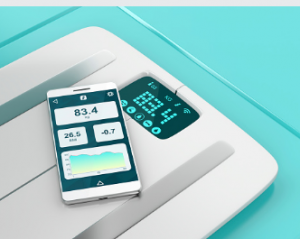When choosing the best digital scale, the most critical aspects are mass increments, Analog to digital converters, Rubber feet, and Weighing by difference. Weighing by difference is important because a constant value can make it difficult to weigh a particular mass accurately. It’s also great to record the mass in 0.1 grams increments. But what other considerations should you take? Read on to find out more. For quality digital scale, check this out.
 0.1-gram increments
0.1-gram increments
When you weigh pigment, you need the precision of a digital scale that will read the weight accurately in 0.1-gram increments. Many standard kitchen scales have one-gram readability, but weighing small amounts of pigment can result in inaccuracies. For example, with a precision of 0.5 grams, a 100-gram amount of pigment will be displayed as 99, 98, or 100 grams.
Despite the name, a 0.1-gram-accurate digital scale is not necessary for weighing large quantities. A scale with a 1/10th-gram increment will do just fine for most purposes. However, you may want to invest in a scale that has 0.001-gram readability for small quantities of liquids. This way, you can be sure you are getting the exact amount of liquid or solid ingredients.
Analog to digital converters
Analog to digital scale converters are devices that convert analog signals to digital values. The resolution of the converters determines their LSB step sizes. The smaller the LSB step size, the higher the resolution. However, this does not mean the higher the resolution, the higher the error. Moreover, higher-resolution converters suffer from code-edge noise. Code-edge noise can be pretty significant, especially if the analog input is placed right at the edge of the code.
The ADC is controlled similarly to a vernier. Its resolution is limited to eight bits, but it can produce digital values with the precision of a 12-bit ADC. The ADC can be programmed to convert any analog signal into an 8-bit binary value. The ADC also allows a user to change its precision level. There are many types of Analog to digital scale converters.
Rubber feet
A digital scale’s rubber feet keep it from slipping off counters. Digital scales usually have four rubber feet on each corner to prevent them from sliding around. When one of these feet becomes stuck on the counter, the scale can’t read the readings correctly. To solve this problem, you should periodically calibrate the scale. It may also need replacement feet every few months, depending on the frequency of use. These feet are easy to install.
Weighing by difference
A digital scale allows you to calculate the weight of an object by determining its mass. By weighing the material using the difference between two vials, you can estimate the exact weight of the object. This difference is usually less than 0.05 grams when using a digital scale. Therefore, choosing a scale with an accurate calibration weight is essential. You can learn more about the calibration weight at the manufacturers’ website. For quality digital scale, check this out.
Lab scales must be very accurate, which is necessary for calculating the weight of chemical substances. Because chemical reactions require precise amounts, these digital scales typically feature a glass enclosure surrounding the measurement surface. This glass case is necessary to avoid changes in measured mass caused by air currents. Temperature changes, for example, can affect weight measurements. This feature is crucial for lab scales. Avoid handling liquids while using your scale to prevent damage to your hands.
Digital scales have many advantages. These scales can be used for weighing various items, and most are made with a single-point load cell. These scales are easy to use and have a display. The display connects to a microcontroller, connected to the load cell by a series of wooden boards. In addition to the wooden boards, you can choose any flat, sturdy material for the two components. For example, a 5kg load cell has four wires, and some have six.
A digital scale is also helpful for mixing drinks. Complex drinks often require bar equipment and a steady hand, and a digital scale ensures that the proportions of the liquid and dry ingredients are accurate. It also enables you to mix dry ingredients in one bowl, reducing the number of dishes to be washed. A digital scale will also help you save time and money by cutting down on cleaning multiple dishes. There are also no worries about losing the data or is-weighing the object. For quality digital scale, check this out.
